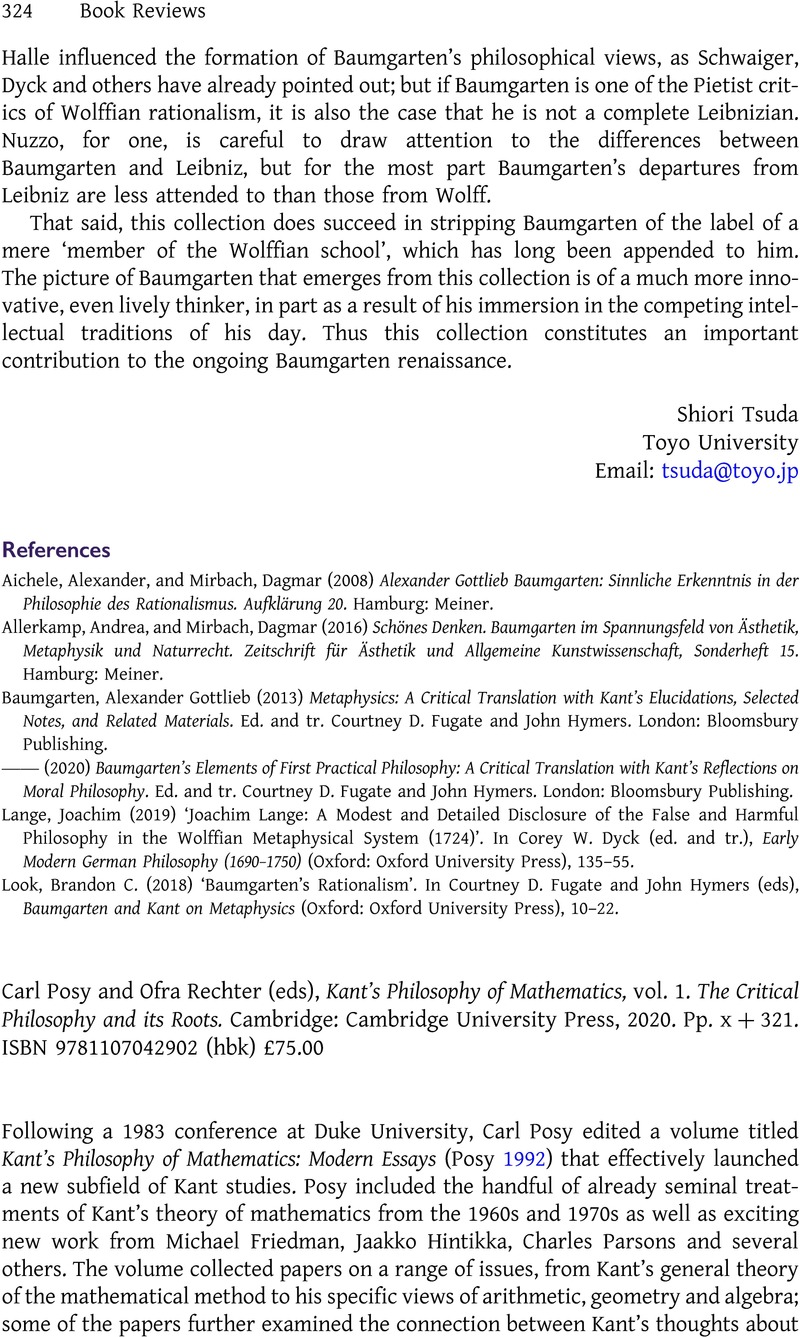No CrossRef data available.
Article contents
Carl Posy and Ofra Rechter (eds), Kant’s Philosophy of Mathematics, vol. 1. The Critical Philosophy and its Roots. Cambridge: Cambridge University Press, 2020. Pp. x + 321. ISBN 9781107042902 (hbk) £75.00
Review products
Carl Posy and Ofra Rechter (eds), Kant’s Philosophy of Mathematics, vol. 1. The Critical Philosophy and its Roots. Cambridge: Cambridge University Press, 2020. Pp. x + 321. ISBN 9781107042902 (hbk) £75.00
Published online by Cambridge University Press: 15 March 2023
Abstract
An abstract is not available for this content so a preview has been provided. Please use the Get access link above for information on how to access this content.

- Type
- Review
- Information
- Copyright
- © The Author(s), 2023. Published by Cambridge University Press on behalf of Kantian Review
References
Posy, Carl (ed.) (1992) Kant’s Philosophy of Mathematics: Modern Essays. Dordrecht: Springer.CrossRefGoogle Scholar
Sutherland, Daniel (2017) ‘Kant’s Conception of Number’. Philosophical Review, 126(2), 147–90.CrossRefGoogle Scholar



